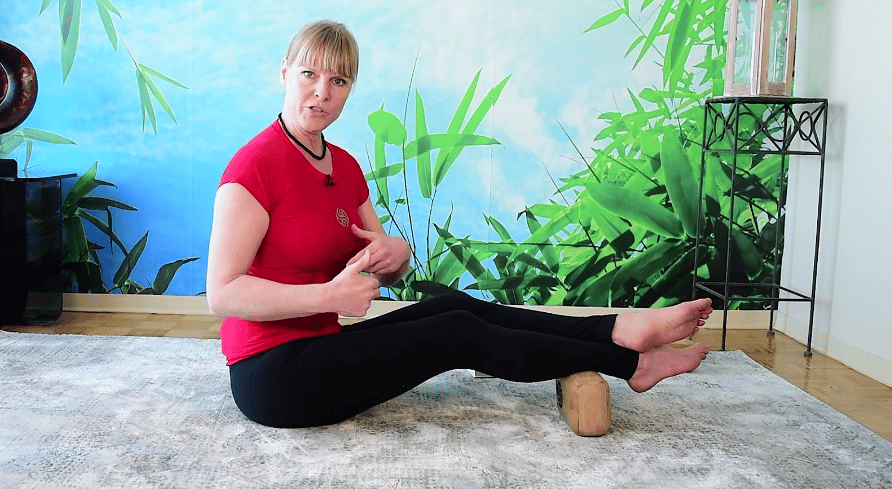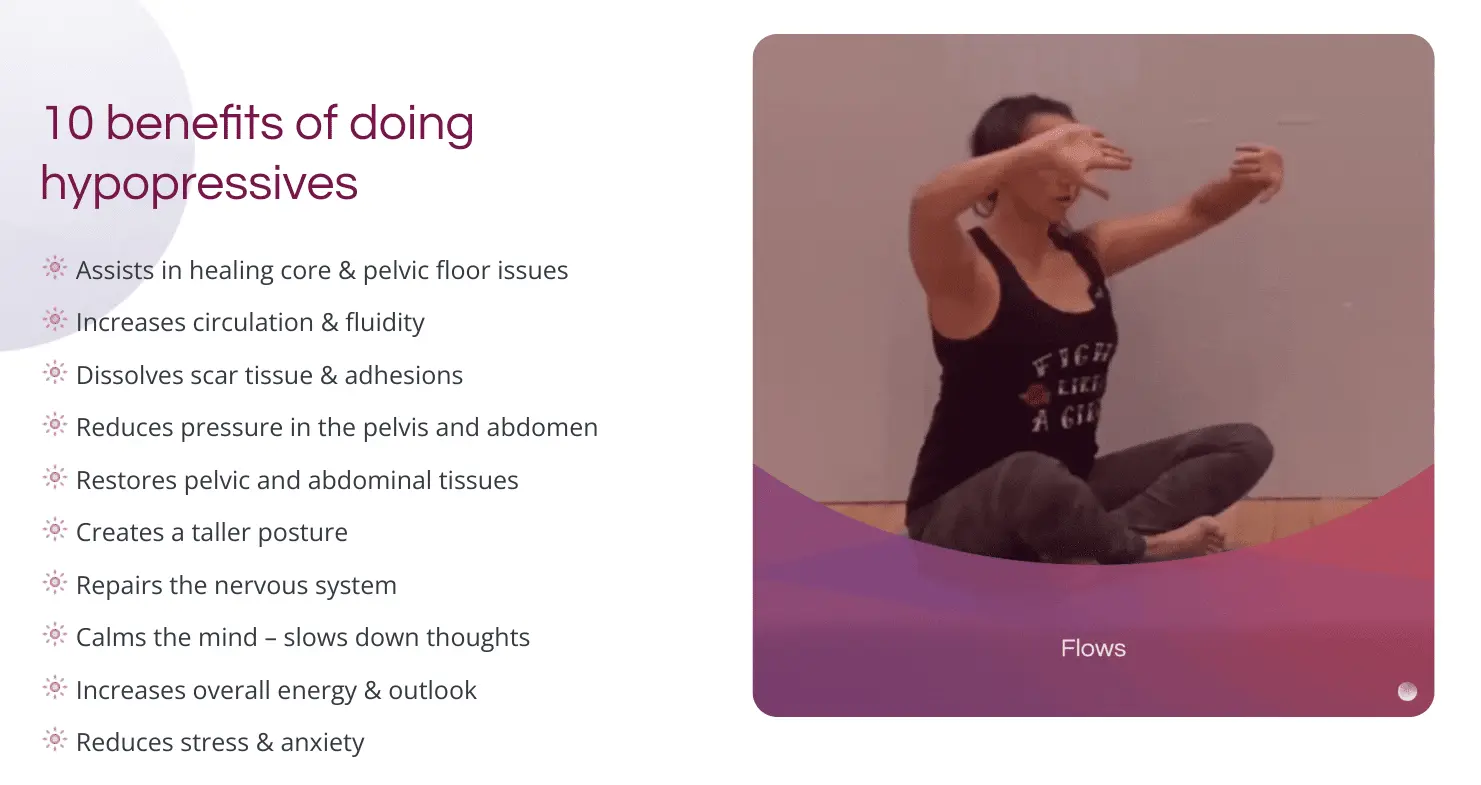How to fix pelvic floor dysfunction: Is it really possible?
- November 30, 2022
- Pelvic Floor

Yes! 100%. And I’m living proof. Among countless other women I’ve worked with.
But that doesn’t mean we didn’t have doubt at the beginning or even the middle of our healing journey.
Because it’s common to feel doubtful and hopeless when you’re not getting answers or solutions from your doctors or physios.
Sadly, many women, including myself, experienced these feelings after being dismissed, told to have surgery, or even worse told, “just learn to live with it.”
When a doctor can’t help you solve the health issues you’re facing, you begin to question if getting better is even possible.
It’s not an empowering position to be in, but from this place, we are pushed (whether we’re ready or not) to find the courage and strength within ourselves to find solutions.
We’re pushed to get in touch with our intuition on a deeper level to “find out” if healing is possible.
And we research, we talk to our trusted advisors and friends, we seek and we search and we never give up until hope is restored – until the answers and solutions start to reveal themselves.
From this place, we get our power back, and from this place, we can start the healing journey with hope and confidence.
Are you with me?
I hope you’re feeling more hopeful and ready to see the list of options available to you on “how to fix pelvic floor dysfunction.” Spoiler alert: there are plenty of natural, safe, and effective (pessary and surgery-free) options for you to explore and try!
What is pelvic floor dysfunction exactly?

There are many ways to define pelvic dysfunction. But we know you can find the definition anywhere on the internet. We want to take a more practical and interesting approach to defining this term that affects millions of women around the world.
First, let’s start out with a list of symptoms most often associated with pelvic dysfunction.
Pelvic dysfunction symptoms
Here is a list of the most commonly reported and experienced by the women who sign up for our MoonRise programs.
- Heaviness/Bulging/Chafing
- Pelvic Organ Prolapse
- Low Libido
- Lower Back Pain
- Feeling a weakness in the pelvic floor
- Vaginal Gas/Vaginal Wideness
- Constipation
- Hemorrhoids
- Leakage – Urinary or fecal incontinence
- Vaginal Dryness/Vaginal Atrophy
- Hip Pain
- Pelvic Pain
- Pelvic Tension
- Diastasis-Recti
- Burning pelvic pain
- Painful Sex
- Nocturia
- Tailbone Pain/Coccydynia
- Abnormal Vaginal Discharge
- Fibroids/Cysts
- Levator Ani Avulsion
- Vaginal Vault
- Pudendal Neuralgia
Another important, and dare I say, fascinating way to learn about pelvic dysfunction is to understand how it occurs – not just what it means.
Let’s get into that now.
What has occurred in the pelvic floor to cause dysfunction?
Generally speaking, when there is scarring and adhesions in the pelvic fascia, pelvic dysfunction is present.
Is this common? And how do scarring and adhesions develop in the pelvic fascia?
Great questions.
First off, yes. Scarring and adhesions are fairly common. And they can occur during or after pregnancy, birth (vaginal or c-section), physical injury, or from emotional or sexual trauma.
Over time, the scarring and adhesions in your pelvic fascia can lead to one or more of the symptoms (listed above).
I’m about to tell you how and why this happens. But first, let me briefly explain what fascia is.
What is pelvic fascia?

Fascia, also known as connective tissue, is responsible for supporting your organs, tissues, bones, muscles, tendons, blood vessels, and cells. And the pelvic fascia in particular is responsible for supporting your pelvic organs and muscles.
When this “support system” in your pelvis becomes stretched and weakened like loose or worn shreds of a woven hammock (because of the scarring and adhesions), organs become pulled down out of their natural position and alignment.
This is what’s known as pelvic organ prolapse, which can create bulging, heaviness, chafing, wideness, queefing, and a whole host of other symptoms as you read earlier.
As you can see, your pelvic fascia has a super important job and function.
Sadly, our traditional healthcare system fails to acknowledge this. Without addressing the scars and adhesions in your pelvic fascia – it’s nearly impossible to fully eliminate symptoms of pelvic dysfunction.
It’s not like science doesn’t exist, because it does. The science of pelvic fascia exists. There are many articles, like this one.
Also, we have a section of scientific journals on our website, towards the bottom of this web page.
How to fix pelvic floor dysfunction

Firstly, it’s important to know that you can correct and heal pelvic dysfunctions naturally – without surgery.
This might be hard to believe or can be surprising to hear, because it’s likely that the only options you were given by your doctor were Kegels, a pessary, or surgery.
Yet, none of these options actually heal pelvic floor issues. They are a band-aid at best.
After spending 18 consecutive months searching and trying dozens of natural healing techniques from Eastern and Native cultures, along with some modern, science-backed techniques – I reversed a Grade 3 prolapse.
But, I’m not the only one. Hundreds of women I’ve worked with have experienced tremendous improvements in symptoms and had complete reversals.
Take a look at some of the viewers we’ve received on our Google business page and on TrustPilot.
Pelvic floor dysfunction exercises
There are many different body-based exercises you can do to eliminate and melt away scarring and adhesions in your pelvic floor. Which, as I’ve discussed, is the key to healing pelvic dysfunction.
Although there are also mind and emotional-based healing techniques that can reduce scarring and adhesions, in this article, we’ll stick with the body-based exercises only.
Fascia Release Techniques

Some of the best exercises you can do to heal pelvic dysfunctions are ones that release or activate the fascia.
The two techniques I want to talk about today are Block Therapy and Scar Tissue Remediation. The first is an external practice and the second is internal.
Block Therapy
This technique was created 20 years ago by Deanna Hansen, a Certified Athletic Therapist. It involves using a yoga block (ideally made of bamboo) or a hard sturdy surface such as a thick textbook or tightly rolled up towel.
You lay different parts of your body on the block or something equivalent, such as your stomach, public bone, thighs, calves, etc. It takes a few minutes for the melting effect or fascia release to occur.
To learn more about this technique, check out this video.
Scar Tissue Remediation
This internal technique involves using your fingers to apply pressure to scars and adhesions in your vagina. In some parts of the world, there are Scar Tissue Remediation Practitioners who are trained to do this practice.
But, it’s 100% possible to do this technique on your own, Yet it’s best to do so with the guidance of a trained practitioner who can teach you how to safely and comfortably perform this technique on your own.
Hypopressives

Hypopressive exercises are a revolutionary fitness technique that combines proper alignment, and breathing techniques, including breath holds to create “a lift” in the pelvic floor. They do this by reducing pressure in your core and pelvic floor and bringing more circulation, fluidity, and nourishment to these areas as well.
This is why having a consistent Hypopressives practice can lead to multiple health and wellness benefits.
Feldenkrais
The Feldenkrais Method involves somatic-based exercises which are exercises based on gentle, mindful movements, with a focus on proper posture and conscious breathing. The primary principles of this method are:
- Listen & go within
- Less is more
- Rest often
With these principles, you’re able to release tension in your pelvic floor and the parts of your body connected to your pelvic floor health, which include your jaw, feet, and spine.
Belly Dance
By practicing belly dance movements, you create more circulation and fluidity in your pelvic floor.
These benefits help to activate the pelvic fascia and bring it back to life. Plus, belly dancing is a lot of fun and it has an amazing and powerful history.
Final points
As I like to say, “when you understand the origin of the symptoms you’re experiencing, it becomes possible to find the right course of action to heal them.”
So in this case, when you understand the cause of pelvic-related symptoms, it’s much easier to know how to fix pelvic floor dysfunction.
And the pelvic floor exercises I just talked about are a great start toward feeling and getting better.
To learn more about the exercises discussed above, feel free to set up a free consultation call with us. We’ll share more details about the exercises, the importance of fascia release, and melting away scarring and adhesions.
We can also talk about the Pelvic Floor Dysfunction Program we have that teaches and shows you how to practice these exercises, along with many others.
Thanks for being here, and for your interest in natural healing!
Blog posts you might like:






